Riding the metro. It’s a simple everyday task for millions of us, something we do so often that we automatically go into autopilot as soon as we start our commute.
We’ve all heard the barely audible announcements over the PA system; seen the stations packed with commuters during peak hours; and maybe even witnessed incidents in stations and on trains that go viral over the internet (quarrels between passengers is one that comes to mind).
In China, tight security at metro stations has become a common sight in recent years. At every entrance stands a team of security guards scanning commuters up and down and keeping a close eye on the contents of bags, all of which have to go through an X-ray machine.
Since the emergence of COVID-19, face masks and temperature checks have also become compulsory – so strict to the point that metro employees patrol the carriages checking that masks are worn correctly (remember to cover your nose as well as your mouth).
As a relatively cheap and, in most cases, convenient way to get around, metro systems have seen something of a building boom on the Chinese mainland over recent decades.

Commuters on the Beijing Subway. Image via That's/Alistair Baker-Brian
The figures speak for themselves. Before the year 2000, only Beijing, Tianjin, Shanghai and Guangzhou had metro systems.
As of April 2022, the Chinese mainland has 45 metro systems in operation, with expansions and brand new systems in the pipeline.
Statista puts the total length of metros in China’s urban areas at 7,354.7 kilometers, as of 2020, though this figure has certainly risen since that time.
Raw stats aside, China’s metro systems are very much intertwined with the country’s recent history of development.
And if you look closely, you might just get lost in the weird and wonderful world that is China’s metros. We explore the mini-museum located in a Beijing metro station, a monorail in Chongqing that literally runs straight through an apartment block, the station “in the middle of nowhere” and the first metro connection between the Chinese mainland and the Hong Kong Special Administrative Region.
Why Has China Built So Many Metro Systems?
China’s metro-building boom is tied up with the country’s development following the ushering in of the Reform and Opening Up era.

Newly constructed Niujie station on Beijing Subway Line 19. Image via That's/Alistair Baker-Brian
However, socioeconomics aside, there’s also a practical reason which explains China’s ability to build metro systems at a rate unmatched by other nations around the globe.
Across the vast majority of metro systems in China, five main standardized trains are used. That means the same trains can be used on metro systems in Beijing, Shanghai, Guangzhou, Shenzhen, Xi’an, Tianjin, Wuhan, etc.
So, why is this important?
In most countries outside of China, there is no such standardization. In countries like the United States and Canada for instance – both of which have more than one metro system – different types of trains are used on different systems.
The result of this is that the fundamentals of each system such as the stations, the tracks, the bridges, etc., have to be designed differently.
RMTransit is a popular YouTube channel that focuses on railway and train-related content. In one video entitled ‘How China Built So Many Subways,’ the host explains China’s standardization as follows:
“What you find when you look at China’s metro systems is the vast majority stick to the A- and B-type trains. That’s sort of incredible.
“This standardization has benefits because planners don’t really need to consider what the train will look like, instead they can make better decisions based on ridership and demand.
“Things like bridges and elevated guideways can also be designed and mass-produced on a scale we can’t really do in North America. You don’t have to contend with designing a different type of bridge for every different type of train.”
Perhaps the greatest benefit of this standardization is, according to RMTransit, the design of the stations:
“Stations can often be the most expensive parts of subway projects. Thanks to common train types and capacity numbers in China, designers know exactly how long and wide platforms need to be, and even where to put the entrances and exits. You can use standardized designs from city to city.”
This helps explain why many Chinese metro stations look the same.
Here’s a comprehensive list of the different metro trains used in China, according to Baike:
Type A – a 3-meter-wide train usually used on the busiest city center metro lines such as Shenzhen Line 1, and Shanghai Line 1 and Line 2
Type B – a 2.8-meter-wide train used for mid- to large-capacity lines
Type C – a 2.6-meter-wide train commonly known as ‘light rail’ – usually used for mid- to small-capacity lines
Type D – a 3.3-meter-wide train usually used for express lines and lines serving suburban areas, such as the Beijing Daxing Airport Express Line and Beijing Line 22 (under construction) which will connect the CBD with the remote Pinggu district
Type L – a 2.5-3.2-meter-wide train, it tends to be used for mid-capacity lines
The above five types form the mainstay of China’s subway lines. However, there are a few exceptions:
APM – a 3-meter-wide train found on Guangzhou’s APM Line, a short metro line serving key stops along the Guangdong capital’s city center
Monorail – found on above-ground metro systems in Chongqing and Wuhu
Mid- low-speed maglev trains – found on Beijing’s S1 line which serves Shijingshan and Mentougou districts
The Weird and the Wonderful – 5 of China’s Most Unique Metro Systems
Beijing – The Chinese Mainland’s First Ever Metro
No China metro story would be complete without mentioning Beijing.
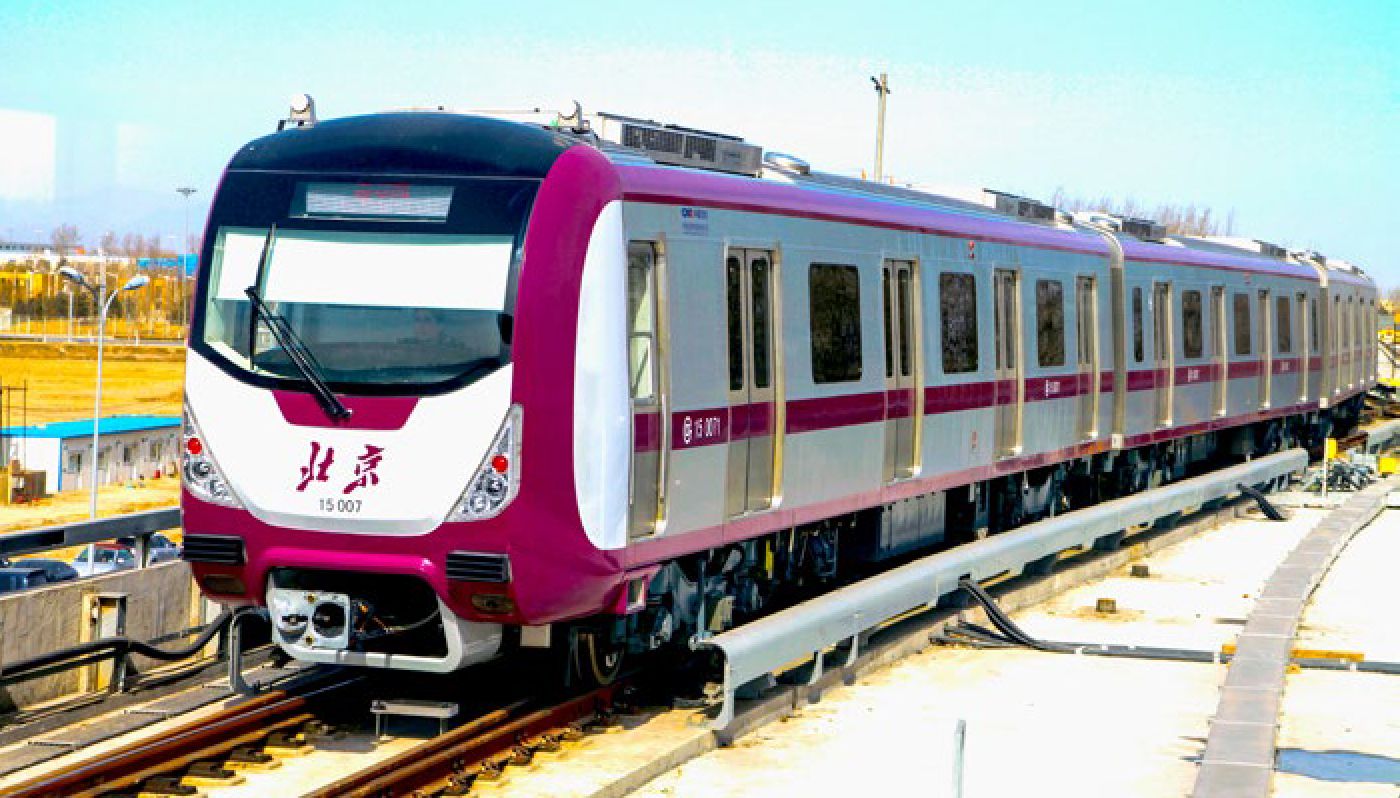
Beijing Subway Line 15. Image via Bruce Connolly
Beijing Subway is its official English name, setting it apart from its counterparts in Shanghai, Guangzhou, Shenzhen and elsewhere which opt for ‘metro.’ Construction on the system started all the way back in 1953. It first opened to the public in 1971, making it the mainland’s first metro system.
After more than 40 years, the total length of the system has now reached a whopping 780 kilometers. If you laid out the entire track heading north from Beijing, it’d end up somewhere around the border with Mongolia.
The size of the Beijing Subway system is impressive, but that’s not the only thing that’s noticeable to any keen metro observer.
Some stations feature surprisingly elegant artwork; in Yongdingmenwai station – an interchange between Line 8 and Line 14 and located at Yongdingmen gate at the most southerly point of the Beijing Central Axis – there’s even a mini–Central Axis Art Museum.
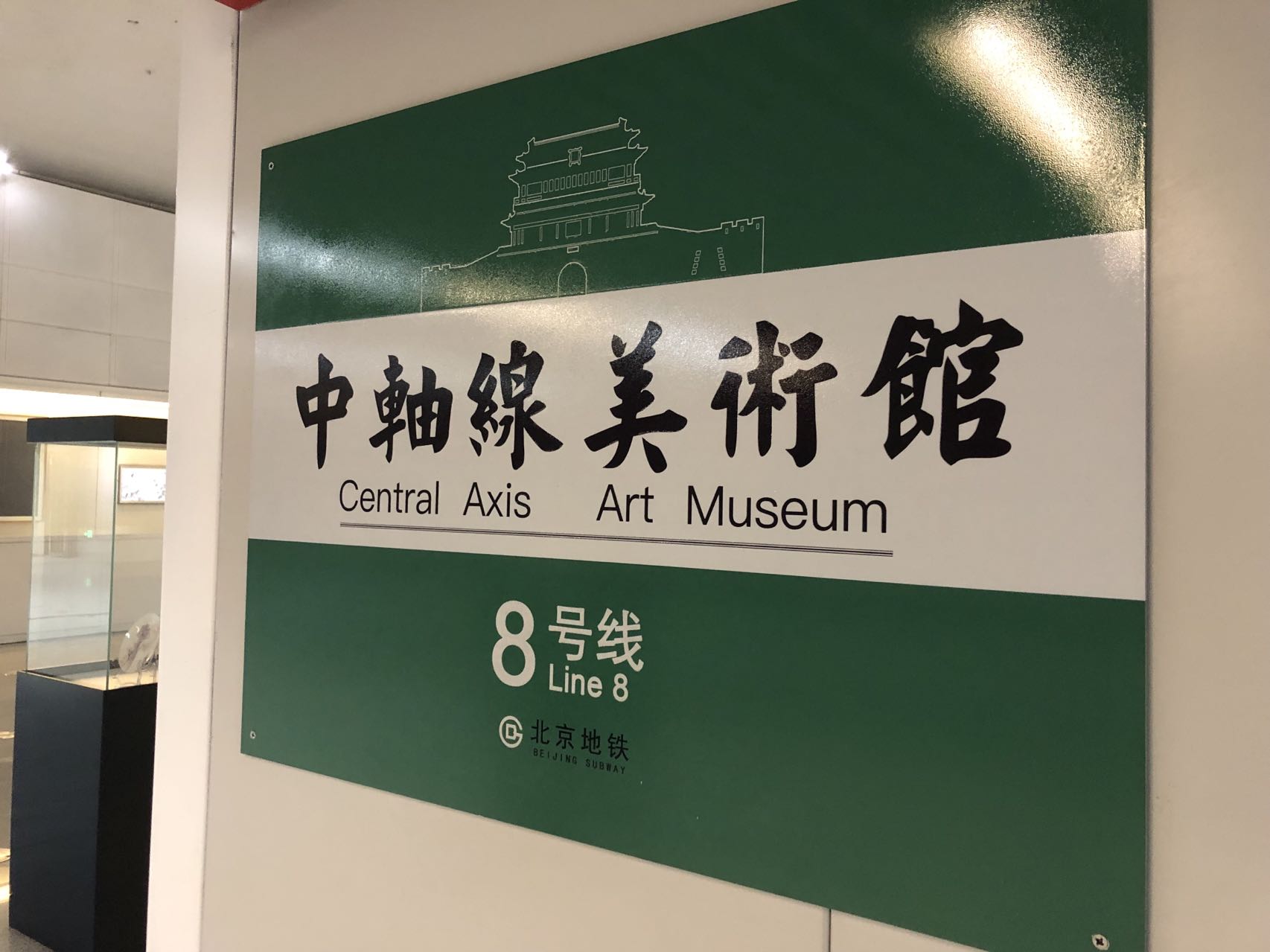
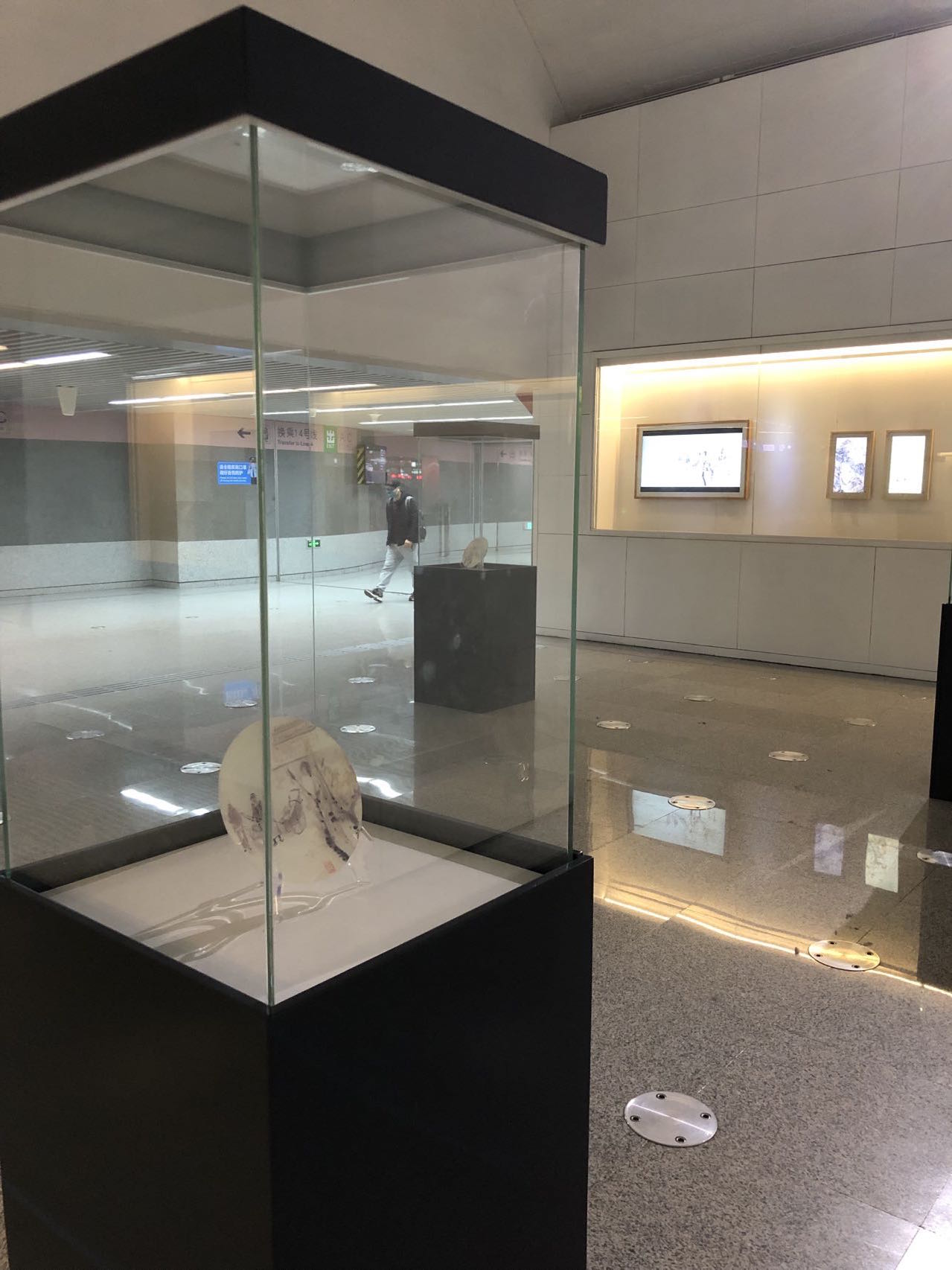
Images via That's/Alistair Baker-Brian
Artwork in Beijing Subway stations captured the attention of one Instagram account which goes by the name of… you guessed it… ‘Beijing Subway Art’; pictures of everything inside the stations from murals to sculptures can be seen. Who knew metro stations could be so culturally rich?
YouTuber Iain Robertson runs a travel channel named ‘For All Life’s Adventures.’ After leaving his native Scotland, he found himself working in Beijing, and couldn’t help but express his positive sentiments about the Beijing Subway to his YouTube audience.
READ MORE: Here's How the Beijing Subway Will Look in the Near Future
Robertson told That’s that the subway system is “easy to navigate, and the connectivity means that you can quickly get to all the key locations with minimum stress.”
He says it’s “probably the best (metro system) in the world,” though others may disagree, of course.
Shanghai – The World’s Longest Metro System
As of December 2021, when two new lines were opened, the total length of the Shanghai Metro was 831 kilometers, the longest metro system in the world, as reported by China Daily.
Having first opened in 1993, Shanghai was the third city on the mainland to build a metro system after the northern megacity of Tianjin.
Given the city’s population of almost 25 million, the length of the Shanghai Metro is not so surprising. Commuters can travel as far as Disneyland and Pudong airport in the east, and even as far as neighboring Kunshan city in the west.
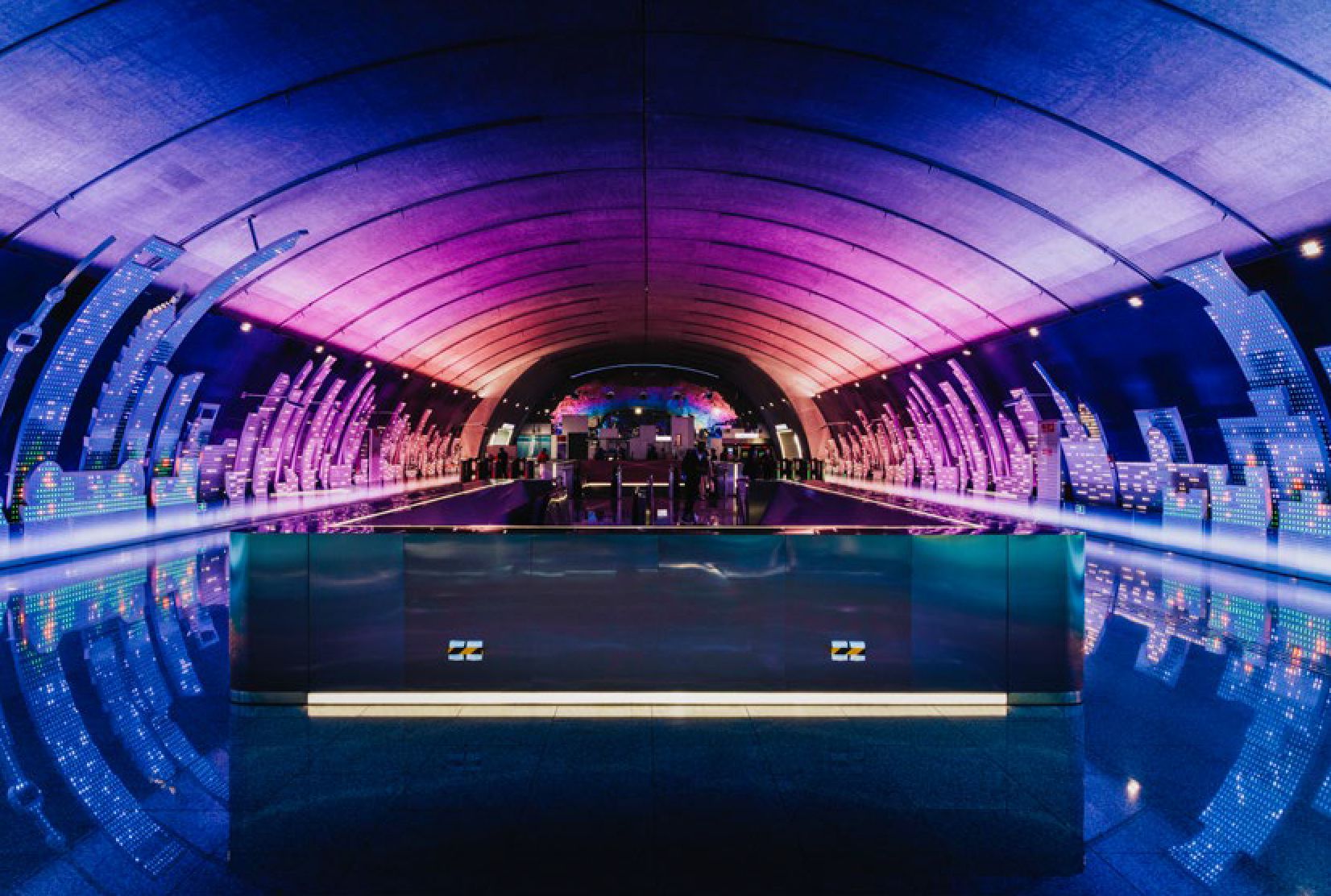
Wuzhong Road station on Shanghai Metro Line 15. Image via @mikeonthebeach_sh
Apparently, the system’s breathtaking total length was not at all daunting for one particular Shanghai resident who created what he calls the Metro Challenge.
Tim Chambers made a video in July 2021 – at which time Shanghai had 17 lines – in which he documented his challenge to ride every single Shanghai Metro line in one go, as quickly as possible.
READ MORE: Meet the Man Who Rode Every Shanghai Metro Line in One Go
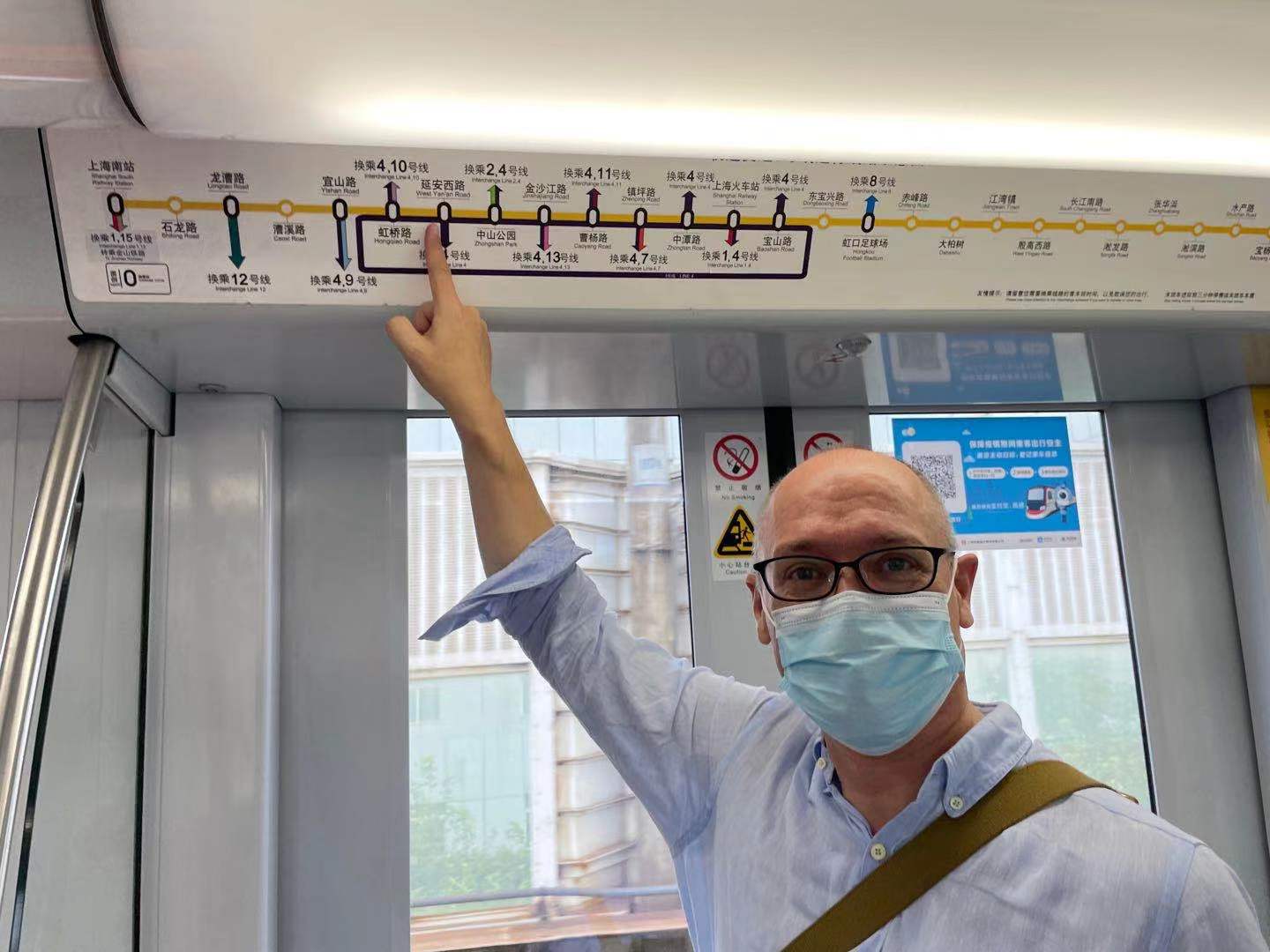
Tim Chambers doing the Metro Challenge. Image via Tim Chambers
Chambers told That’s that it was not his first time attempting the challenge:
“I have now done the Metro Challenge twice, and I still think I have not quite optimized the route, so I plan to go again.
“My first time was 3 hours 37 minutes, and then 3 hours 17 minutes the second time, so I shaved off 20 minutes.”
Amazingly, Chambers recalls only having to pay RMB5.5, working out at “RMB1.7 per hour of fun.”
He says he’s considered other metro-related challenges, including visiting every single station in one day. However, he admits this may very well be impossible given the sheer number of stations.
Chongqing – The One with a Few Surprises
Opened in 2004, the Chongqing metro now has 10 lines, but it’s not so much the numbers that make this metro line stand out.
In July 2017, CNN published an article with the headline “China’s metro station in the middle of nowhere.” They were referring to Caojiawan station, which looked to be… in the middle of nowhere.
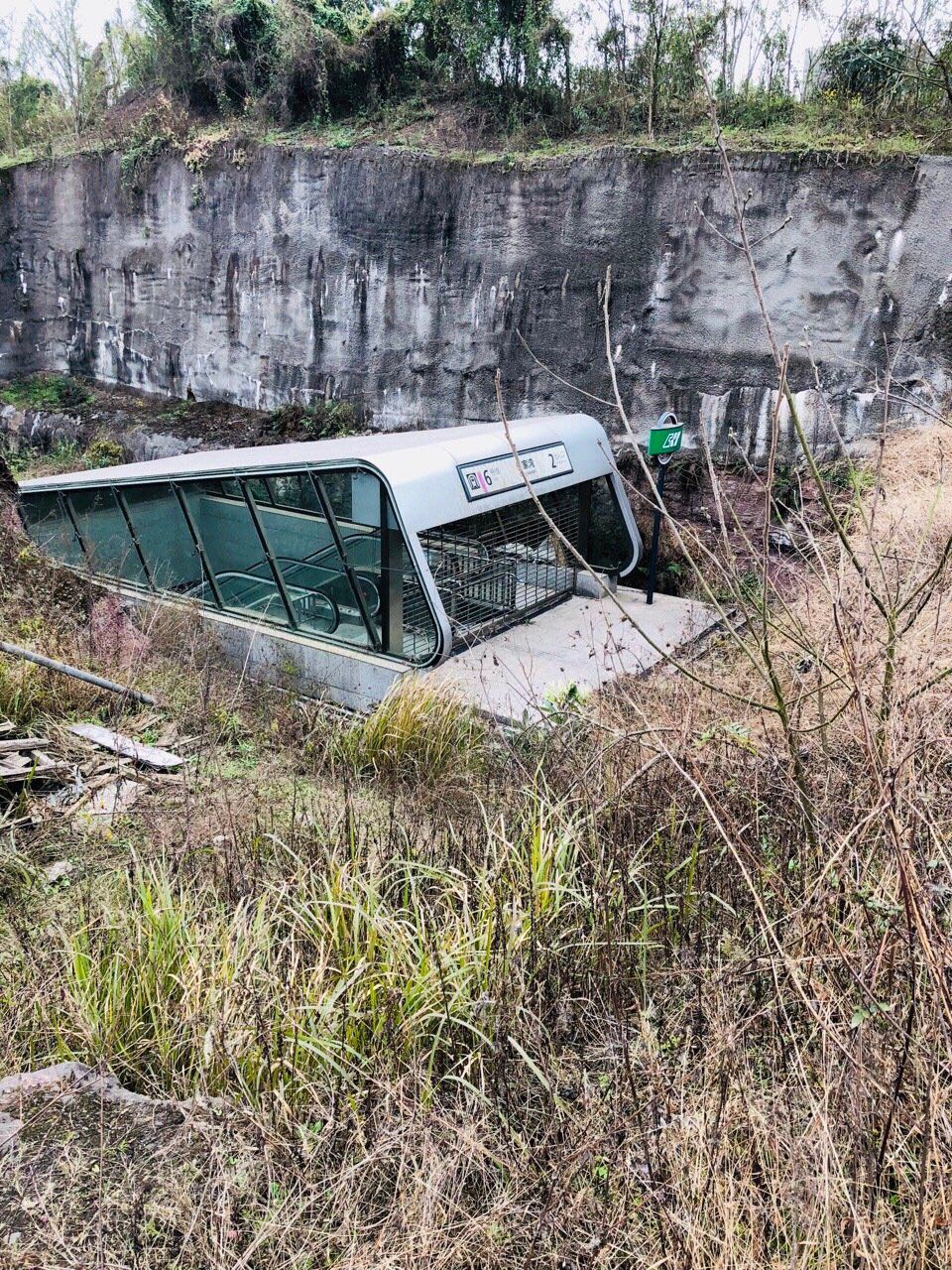
Caojiawan station around 2017. Image via Weibo/@莫娜MONA12138
The Line 6 station in the Beibei district is seen amongst a wasteland of weeds and rubble. When it was first built, there wasn’t even a municipal road near the station; there were no connecting bus stops and passengers had to take a minivan to get there.
Fast forward to 2020 however, and you see a very different picture.
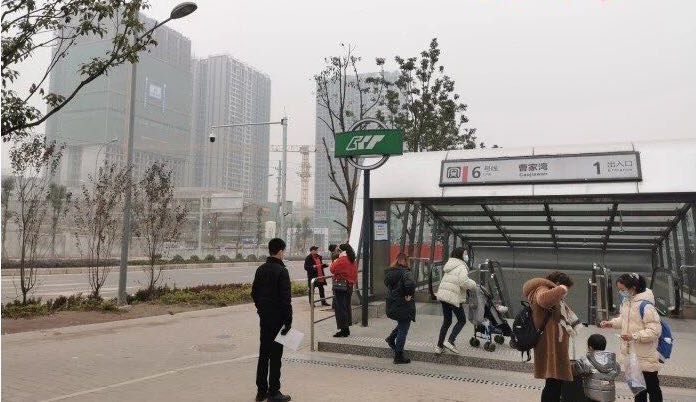
Caojiawan station around 2020. Image via Weibo/@乌镇老田埂
Around Caojiawan station are newly developed roads and tower blocks under construction – a sign of China’s long-term planning strategy.
It’s almost impossible to talk about the Chongqing metro without mentioning the ‘wanghong’ station – the one all the influencers visit to take photos and videos.

Liziba station on Chongqing Metro Line 2. Image via @mikeonthebeach_sh
Liziba station on Line 2 is particularly unique in that it is located within a block of apartments. A whole load of videos and photos can be found online showing trains on the above-ground monorail passing into the building.
And, as if that’s not enough, Chongqing is also home to the Chinese mainland’s deepest underground metro station.
Located in Jiangbei district, Hongtu Di is an interchange station between Line 10 and Line 6 and is 94 meters underground. The station has “attracted a lot of tourists,” according to an article posted on Tencent Net.
Aside from the hotpot and awesome city views, is the metro system another reason to visit Chongqing? We’ll let you decide.
Shenzhen – The One that Takes You to the Border
First opened in 2004, the Shenzhen Metro has expanded to include 10 lines.
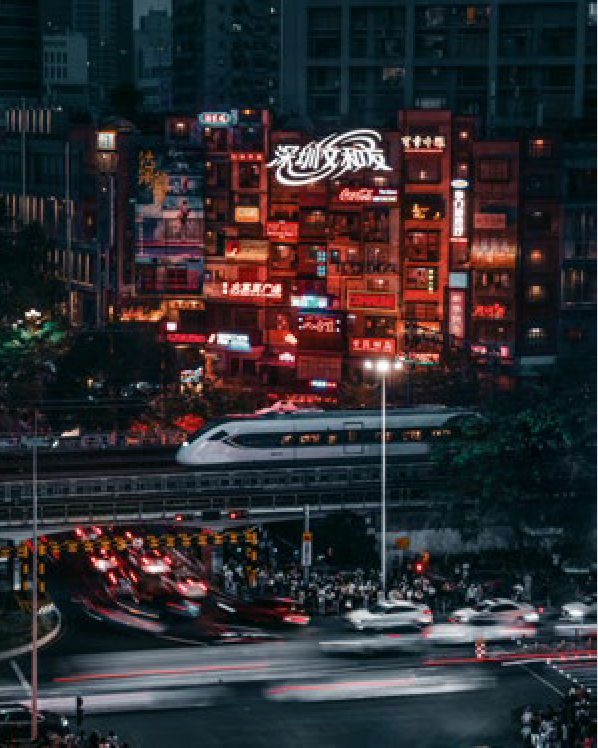
Image via @Martin.700x
The southern Chinese city is synonymous with the Reform and Opening Up era. Just think about how many times you’ve heard the lines “from a small fishing village to an economic powerhouse,” or words to that effect.
A key factor in Shenzhen’s rapid development has been its connection to the Hong Kong Special Administrative Region which lies to the south.
Restrictions in both the Chinese mainland and Hong Kong, as a result of COVID-19, mean that only a limited number of people can travel across each of the land borders nowadays. Prior to COVID-19, the border crossing points were abuzz with tourists, workers and those traveling to see family.
Close to each land crossing point is… you guessed it… a metro station.
Let us walk you through each of them:
Luohu – located on Line 1, it was the busiest border point in Shenzhen prior to COVID-19. Luohu also used to be in the top three of China’s busiest border crossing points. The metro connects with its namesake station, Lo Wu on the Hong Kong side of the border
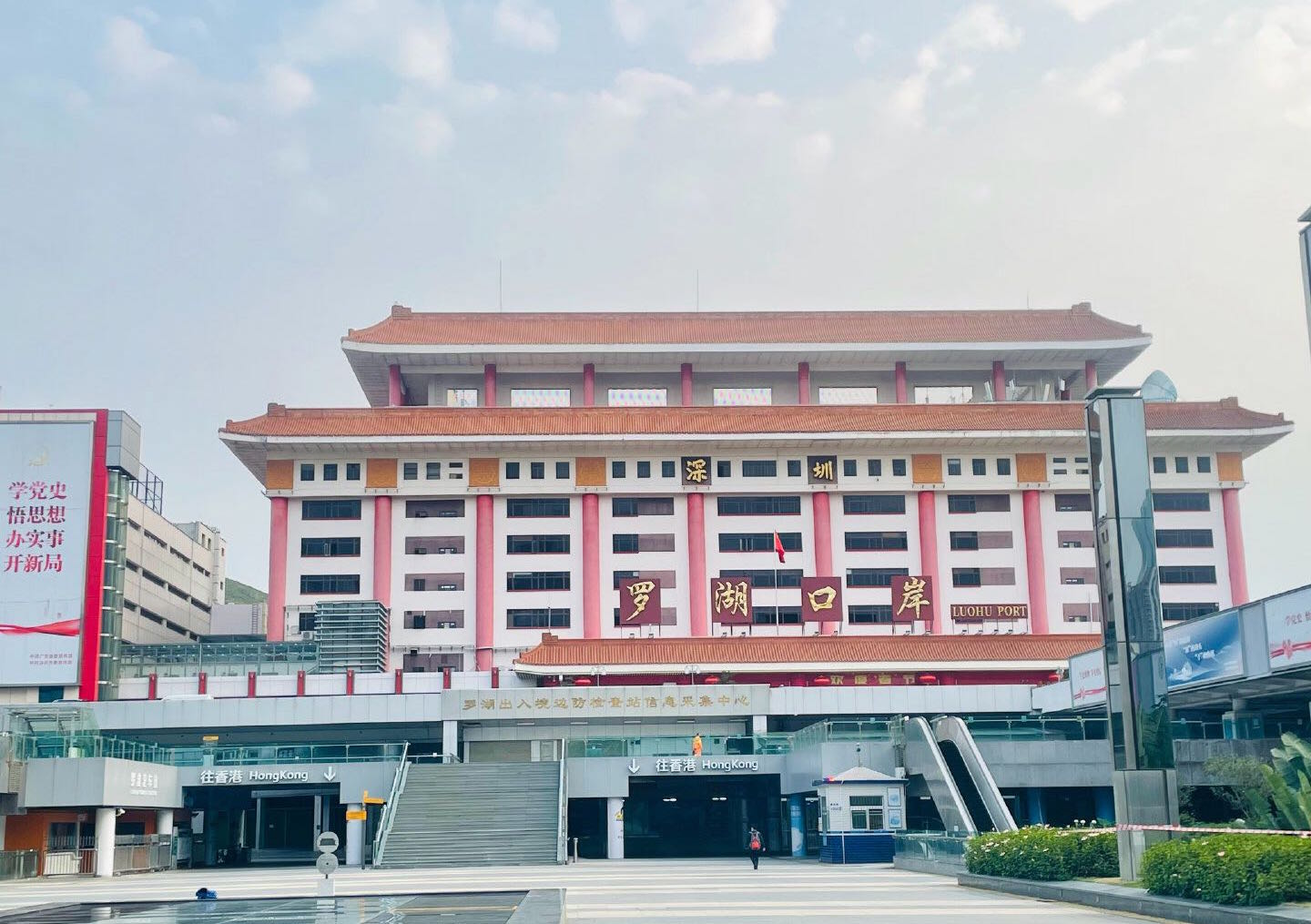
Luohu Port is almost deserted during COVID-19 times. Image via Weibo/@JessssChoi
Futian – located on Line 4 and Line 10, Futian was the first-ever land border to be connected directly via metro to Lok Ma Chau station in Hong Kong, though you have to go through customs before changing trains, of course
Huanggang – located on Line 7, this is a big port for heavy goods vehicles. It is in operation 24/7 and offers convenient bus routes to various locations in Hong Kong
Wenjindu – located near the Wenjin station on Line 9, this was the first land crossing between the mainland and Hong Kong, well before Shenzhen's urbanization
Liantang – on Line 8 (an extension of Line 2), this recently constructed border crossing is the seventh land crossing between both sides
Shatoujiao – located near Shaotoujiao station on Line 8 (an extension of Line 2), this is one of Shenzhen’s quirkier land border crossing points. Inside Shatoujiao is a closed frontier area for which visitors need a special permit; within the area is Chung Ying (Sino-British) street, so-named because of its history of joint control by China and Britain when Hong Kong was still under British rule. Today, the area attracts numerous tourists from the Chinese mainland
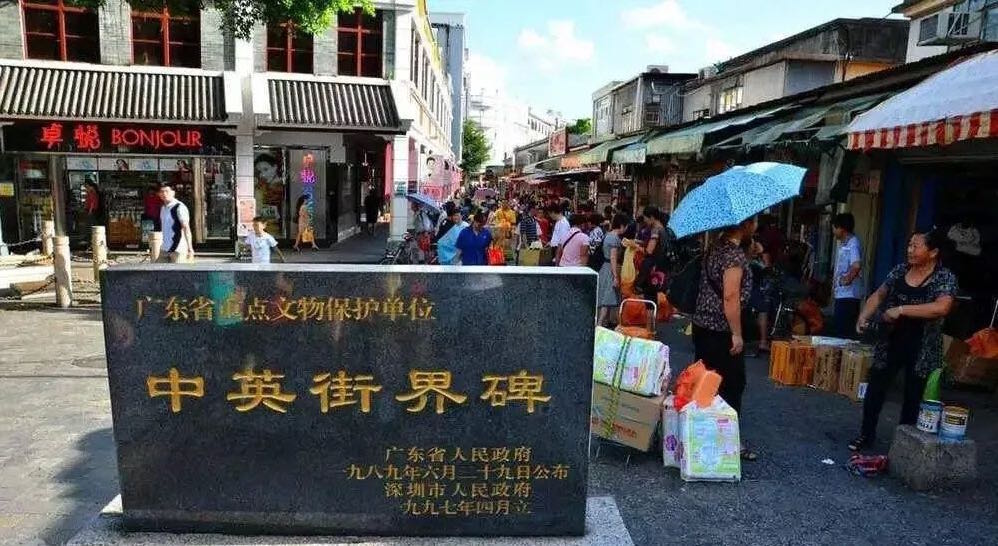
The Sino-British Street at Shaotoujiao. Image via Weibo/@星闻舆情官
Shenzhen Bay – the port is soon to be connected by Line 13. The bridge across to Hong Kong’s Yuanlang district implements a “one place two checks” policy which means Hong Kong immigration authorities can check those entering and leaving Hong Kong on the Shenzhen side of the bridge
Urumqi – China’s Far West Metro
The capital of the Xinjiang Uygur Autonomous Region is home to the mainland’s furthest west metro.

Urumqi Metro Line 1. Image via Weibo/@新疆摄影李家钟鸣
Having first opened in October 2018, the system so far includes only one line, from Diwopu International Airport in the north to the Erdaoqiao area in the south, near the famous Grand Bazaar, the world’s largest bazaar by scale.
Announcements are given in Mandarin, English and Uygur. Furthermore, all signs are written in Uygur script, as well as both English and Chinese characters.
One Urumqi resident, known only by her English name Lydia, told That's about her experience riding the Urumqi Metro:
“Luna (her daughter) and I had a great time since it’s brand new and there were not that many people. We were able to get a seat and we tried reading the signs on the metro.”
She went on to compare it with her experience of the Shanghai metro.
“It’s really different; I always took the metro in Shanghai because it’s so convenient. But the Shanghai metro is old and really crowded all the time. During the summer, it’s freezing because of the air conditioning!”
Past the Peak of the Metro Building Boom?
Many of China’s cities are still planning to expand their respective metro networks.
In Beijing for instance, the ‘Comprehensive Beijing Rail Transit Network Plan (2020-2035)’ details the future of the city’s already huge urban transit network, even connecting with Langfang city in neighboring Hebei province.
Does that mean that everywhere in China still has a hunger for metro-building? Not necessarily, say Sixth Tone.
In an article entitled ‘De-Platformed: China Rethinks Its Subway Addiction,’ researcher Liu Daizong notes that local officials previously saw subways and metros as a way to cut carbon emissions and deal with rapid urbanization.
However, he goes on to point out that there has also been something of a change of attitude in recent years, and that metros are not necessarily all the rage as they used to be.
Liu writes that officials “suspended applications for new subway lines in cities without existing metro systems, likely in response to mounting concerns over rising costs and runaway local debt.” He cites the experience of officials in Hunan province in June 2021 as an example.
Are we past the peak of China’s metro-building boom?
Regardless of whether this is true or not, existing metro systems are going nowhere. Whether you’re obsessed with doing a metro challenge, enjoy learning quirky metro facts, or just… you know… want to get from A to B, we hope you too can get lost in the weird and wonderful world of China’s metro systems.
[Cover image via @mikeonthebeach_sh]
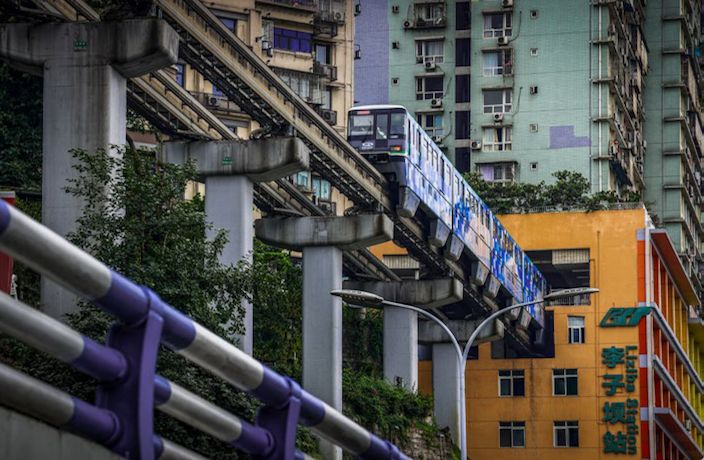





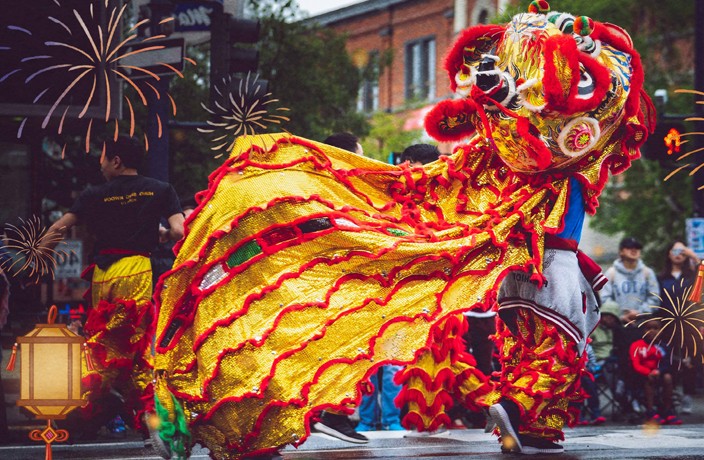














0 User Comments